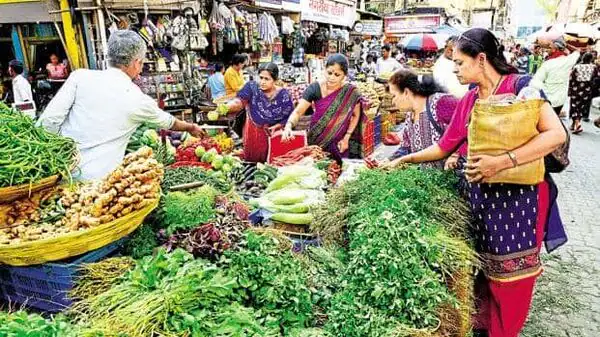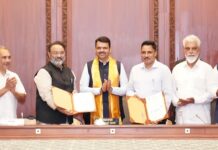In recent discussions about India’s economic recovery, the concept of ‘K-shaped’ growth has garnered considerable attention. This term describes a scenario where different sectors of the economy recover unevenly, leading to disparities in economic outcomes. However, this uneven recovery is not limited to growth alone; it is also evident in inflation patterns. External shocks, particularly those linked to climate change and the COVID-19 pandemic, have exacerbated these disparities, resulting in what can be described as K-shaped inflation. This editorial explores how climate-induced shocks, such as recent heatwaves, have contributed to this phenomenon and considers the implications for interest rate policies.
Unpacking K-Shaped Inflation
The idea of K-shaped inflation reflects a situation where inflation rates vary significantly across different segments of the economy. In this scenario, some sectors experience sharp increases in prices, while others see relatively stable or even decreasing prices. This disparity is similar to the K-shaped growth recovery, where some areas or groups recover robustly, while others lag behind.
Recent trends in inflation reveal that climate shocks have played a critical role in driving this divergence. The effects of these shocks are visible in different segments of the economy, particularly in the agricultural sector, which has been heavily impacted by recent extreme weather events.
The Impact of Climate Shocks on Inflation
A notable example of this phenomenon is the heatwaves that have affected large parts of India in recent months. These extreme temperatures have had a profound impact on agriculture and livestock, leading to increased prices for various food items.
Agricultural Disruptions
The heatwaves have caused significant damage to crops, resulting in reduced yields and higher prices for essential food items such as wheat and pulses. As these crops become scarcer, their prices rise, disproportionately affecting low-income households that spend a larger share of their income on food. This uneven impact on different economic groups illustrates the K-shaped nature of current inflation.
Livestock and Dairy Prices
The heatwaves have also led to higher mortality rates among livestock, impacting dairy production. The resulting decrease in milk supply has driven up prices for dairy products, further straining budgets for households dependent on these staples. Again, the inflationary pressure is more pronounced in regions where dairy farming is a significant economic activity.
Regional Disparities
The inflationary effects of climate shocks are not uniformly felt across the country. Regions heavily reliant on agriculture or experiencing severe weather disruptions are seeing higher inflation rates compared to areas less affected. This regional variation underscores the K-shaped nature of inflation, where some areas face significant price increases while others experience stability.
Interest Rate Easing and Its Complexities
In response to economic challenges, the Reserve Bank of India (RBI) has implemented policies aimed at easing interest rates. While lower interest rates are typically used to stimulate economic activity by reducing borrowing costs, their effectiveness can be complicated by the uneven inflationary pressures resulting from climate shocks.
Balancing Economic Stimulus
Interest rate cuts are designed to encourage borrowing and investment, which can help boost economic activity. However, in a scenario where inflation is uneven, such as the K-shaped inflation currently observed, reducing interest rates may have mixed effects. For example, while lower rates might benefit borrowers and stimulate growth in some sectors, they could also exacerbate inflation in areas already experiencing significant price increases.
Managing Inflation Targets
The RBI’s mandate includes maintaining inflation within a target range. However, with a K-shaped inflation pattern, where different sectors experience varying inflation rates, managing this target becomes more challenging. Policymakers need to consider both the overall inflation rate and the specific pressures affecting different regions and sectors when making decisions about interest rates.
Targeted Policy Approaches
Given the complexities of K-shaped inflation, a one-size-fits-all approach to monetary policy may not be sufficient. Instead, targeted measures addressing specific sectors or regions affected by climate shocks could be more effective. For instance, providing targeted support to farmers or investing in climate adaptation measures could help alleviate some of the inflationary pressures.
Moving Forward: Addressing Climate and Inflation Challenges
To effectively manage the economic implications of climate shocks and K-shaped inflation, several strategies are essential:
1. Investing in Climate Resilience: Enhancing climate resilience through initiatives such as developing drought-resistant crops and improving irrigation systems can help mitigate the impact of extreme weather events on agriculture and other sectors.
2. Targeted Financial Support: Providing financial support to regions and sectors most affected by climate shocks can help cushion the impact of rising prices. This support might include subsidies for affected farmers or price stabilization measures.
3. Coordinated Policy Measures: Aligning monetary policy with fiscal measures can address the uneven effects of inflation. This involves balancing interest rate policies with targeted economic support to create a more stable economic environment.
4. Improving Data Transparency: Better data collection and reporting on inflation trends can enhance policymakers’ ability to respond effectively. Transparent reporting on price changes across different sectors and regions is crucial for informed decision-making.
The emergence of K-shaped inflation in India highlights the complex interactions between climate shocks and economic policies. As extreme weather events continue to impact agriculture and other sectors, their effects on inflation reveal an uneven economic landscape. Addressing these challenges requires a nuanced approach that combines interest rate policies with targeted support measures. By investing in climate resilience, providing targeted financial aid, and enhancing data transparency, policymakers can better navigate the complexities of K-shaped inflation and work towards a more equitable and stable economic environment.
Disclaimer: The thoughts and opinions stated in this article are solely those of the author and do not necessarily reflect the views or positions of any entities represented and we recommend referring to more recent and reliable sources for up-to-date information.








